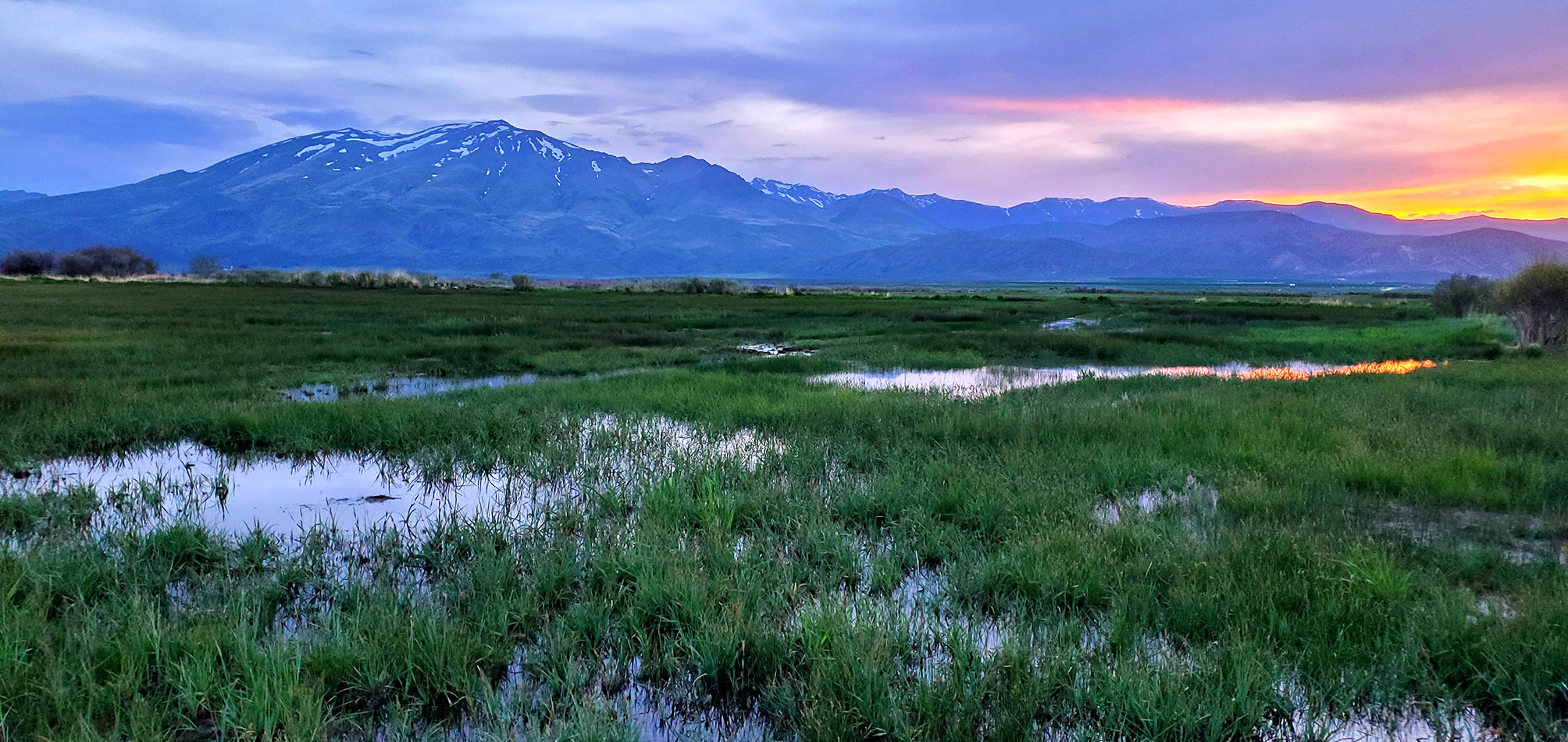Annual Property Inspections
ODLT is seeking 2-6 surveyors to help with point counts May-July in the wet meadows of Trout Creek Ranch Headquarters. These surveys are used to determine overall abundance of migratory birds and are important in guiding restoration plans. We will also install audio recording units to capture bird calls throughout the survey area. Teresa Wicks from Bird Alliance of Oregon (formerly Portland Audubon) created this protocol and will assist in the field day training May 15-16. Overnight stays are required and we have accommodations for sleeping indoors, outdoors, or vehicle camping (see registration form for details)
We’re restoring hundreds of acres of wet meadows at Trout Creek Ranch for sandhill cranes, long-billed curlews, avocets, and other birds in this critical migration and breeding area of the Pacific Flyway. Documenting bird activity will help us understand how we can manage Trout Creek to best benefit the diversity of species that use the creek and associated wet meadows and we’re glad you can join in the counts!
The wetlands of Southern Oregon-Northeastern California (SONEC) comprise some of the most important spring and fall staging habitat for waterfowl in North America, supporting more than 70% of the Pacific Flyway’s dabbling ducks in spring migration. Approximately 5,700 acres of Trout Creek Ranch have been identified as SONEC priority areas. Trout Creek Ranch lies 40 miles south of Malheur National Wildlife Refuge, a protected area that supports more than 340 bird species. Like the refuge, we’re planning to manage flood-irrigation, haying, and grazing to provide critical habitat for waterfowl and pronghorn antelope during their migrations, as well as many other animals throughout the year.
Skills and supplies needed/most helpful: Ability to identify regional birds by sight and sound is required. Collecting data entails traveling across wetlands, uneven terrain and crossing fences without shade. Routes require a minimum of 3-5 miles of hiking, some 5-7+ with the possibility of 10 miles roundtrip. There will only be bathroom access at the beginning and end of the route.
A backpack could help carry the necessary pencils and clipboard, along with any insect repellent, mosquito nets, beverages, and snacks. Please bring your preferred food, water, and appropriate clothing for the weather and terrain (waterproof boots, waders and clothing that can get wet, hiking poles may be helpful). We recommend using Avenza maps or Gaia GPS on your smartphone to navigate routes to survey points. We have a handful of binoculars for use, but you are welcome to use your own or bring a spotting scope.

WHEN:
Surveys will take place May 15-16th, 1st week of June and the 1st week of July. Surveys will begin around sunrise and end by 10 AM each morning. During this time, we will also deploy audio recording units.
Virtual Trainings
A training session will be recorded for you to watch online to learn about the bird survey protocol. Live online question and answer sessions will occur in late April. You will be required to take a quiz online to help us gauge your identification skills of sight and sound. You may take this as many times as possible before the May field days. (Teresa will host another virtual orientation for volunteers interested in processing the audio recording unit data, which is tentatively scheduled for September 6-8).
Overnight Field Training & Survey 1 of 3
Tuesday, May 15 noon = Field training
Wednesday May 16, sunrise-10 am = Survey 1
Tuesday afternoon’s run through will expose you to the on-site conditions for Wednesday’s survey and you can venture across the site afterward. Parking in close proximity to bird survey points will be determined at the point count training, but will be close to Headquarters. This will require hiking to points. See housing details below.
Future field studies will occur in the first week of June and July and we’ll work with your schedules to identify best times.
WHERE:
Trout Creek Ranch headquarters (about 15 min south of Fields)
Google Maps Directions. (Additional directions will be provided).
Next Steps
Please register and fill out our Volunteer Application form to participate.

Wildlife Camera Videos
Related Reads
Going with the flow
We're restoring a creek to help fish and wildlife.
A land of learning
Local Tribal members shared stewardship practices to inspire youth.
Looking out for the birds
Volunteers help guide restoration plans with wetland bird surveys.
Virtual fences mooove cows online
Virtual fence is a new technology that can help land managers maintain wildlife connectivity in permitted grazing areas.
Tribal Gatherings
Tribal leaders discussed the Native history and stewardship of their homelands at Trout Creek Ranch.
Research fueled by fire
Oregon State University finished 10 years of fieldwork on sage-grouse responses to wildfire.
Tribal Stewards
Tribal teens lead on conservation efforts through Northwest Youth Corps.
Spring returns
Rod Klus returns to researching sage-grouse for Oregon Department of Fish and Wildlife.
Mountains of Research
Researchers spent a summer in the mountains and left with more than data.
Spreading wings in conservation
Jack Strang created new connections to the high desert during our first internship.
Neighbors helping neighbors fight fires
Rangeland Fire Protection Associations protect the high desert and each other.
Spring into recreation & conservation
John Sterling works at the intersection of both as a volunteer board member.
















